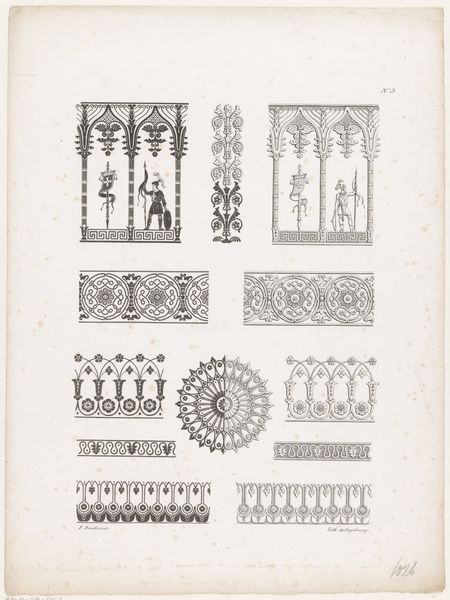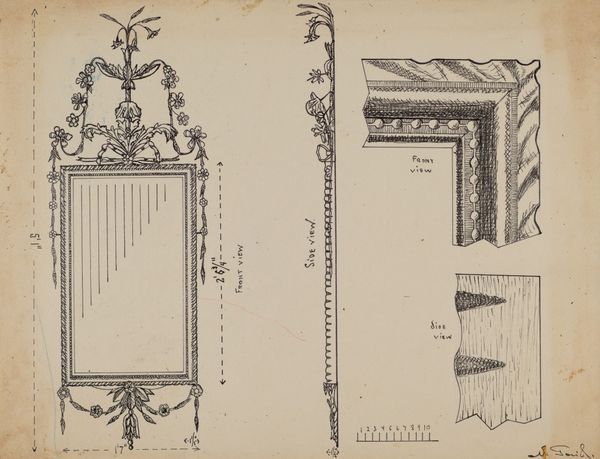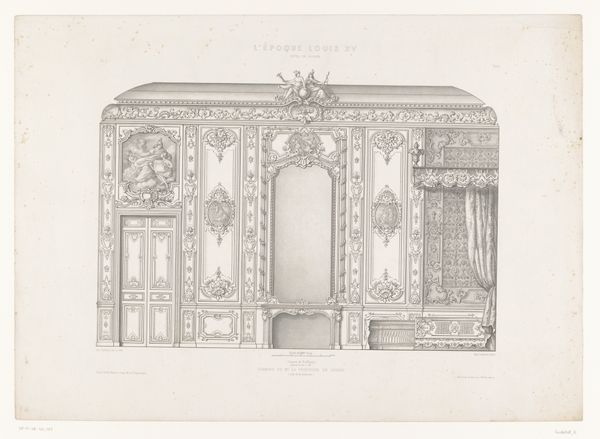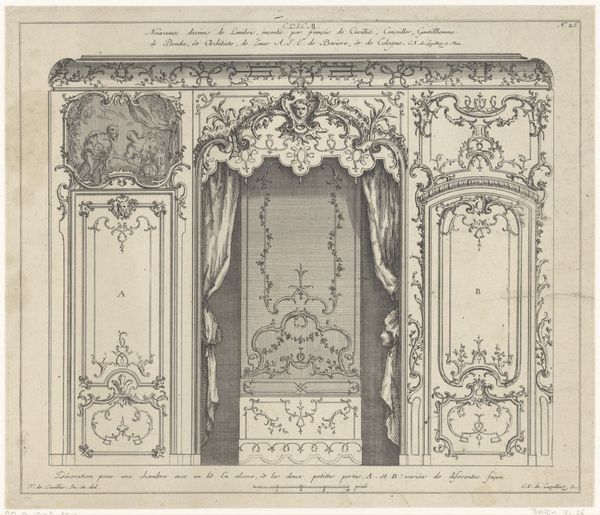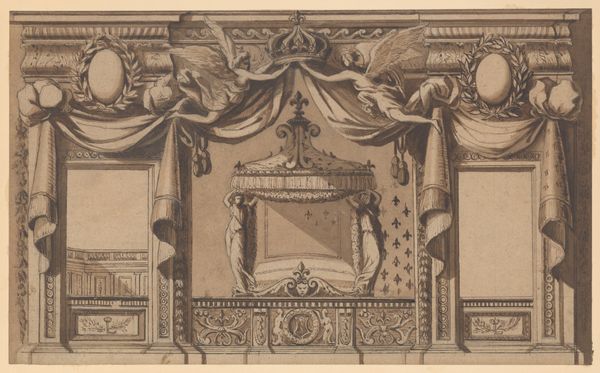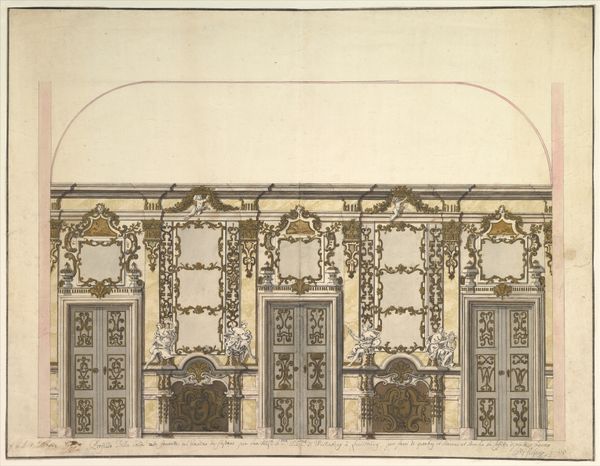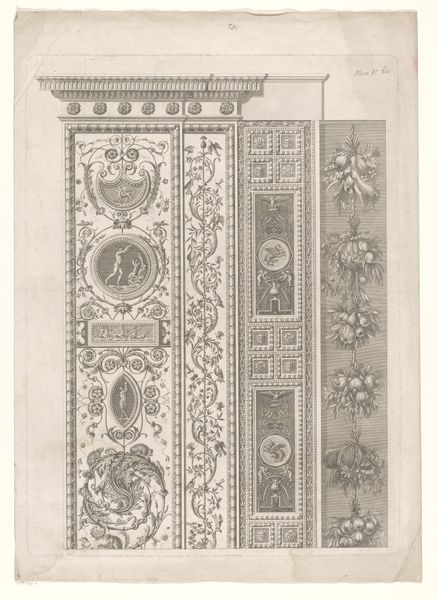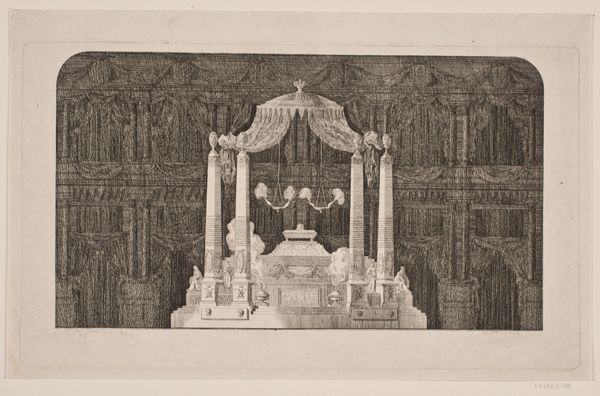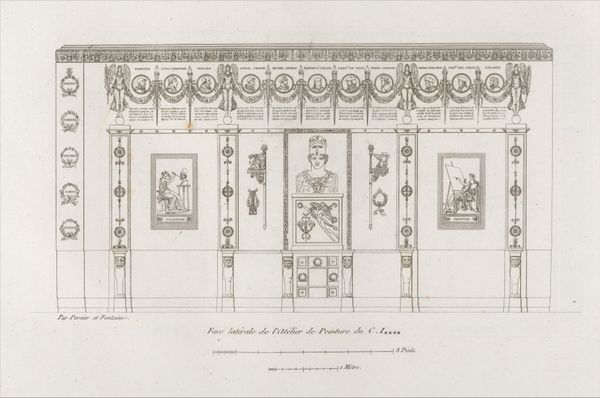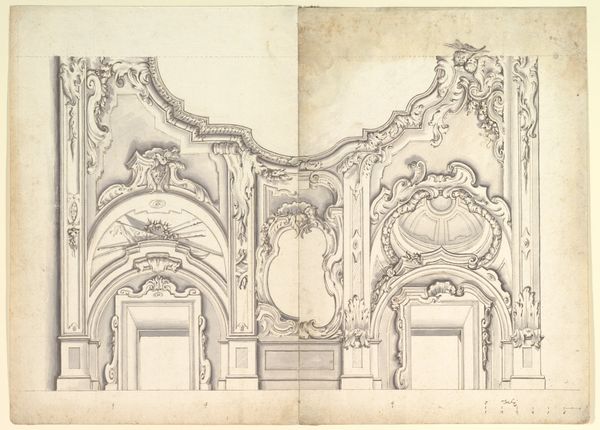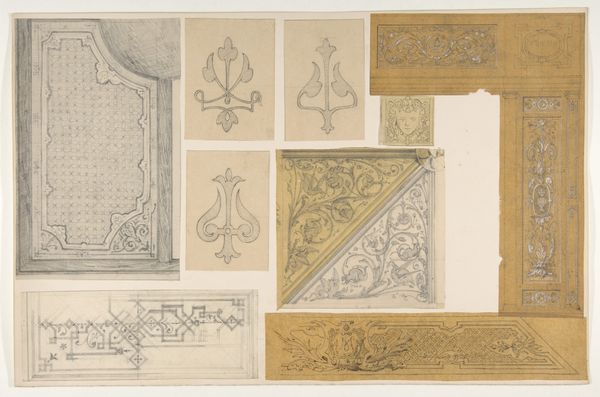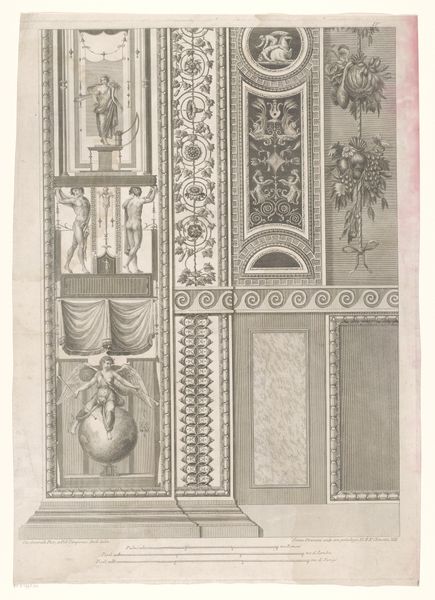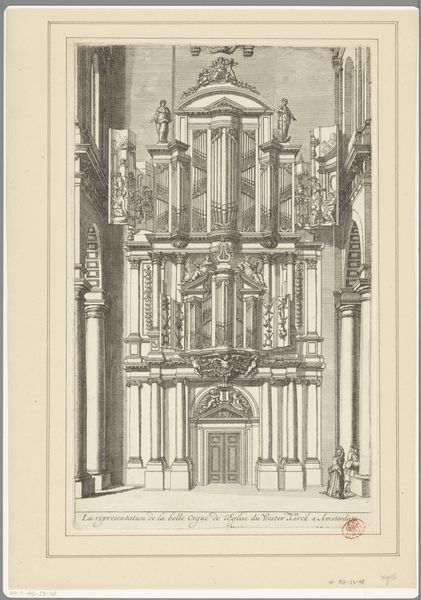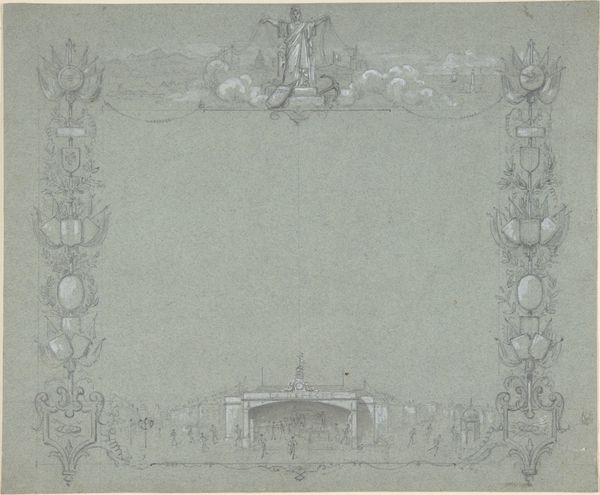
drawing, print, etching
#
drawing
# print
#
etching
#
book
#
old engraving style
#
etching
#
decorative-art
Dimensions: 13 5/8 x 17 5/8 x 11/16 in. (34.6 x 44.8 x 1.8 cm)
Copyright: Public Domain
Editor: This is Plate 26 from "Kimball's Book of Designs: Furniture and Drapery," created by J.W. Kimball in 1876. It's an etching showing different interior design elements, and what strikes me is the rigid formality. What story do you see in this layout? Curator: The formality speaks volumes. We're looking at a moment in the late 19th century where design wasn't just about aesthetics, but also about asserting social status. Who had access to these intricately designed spaces, and what did that say about power dynamics at the time? Editor: So, you’re saying these designs weren't accessible to everyone? Curator: Exactly. Consider the elaborate drapery. Fabric and the skilled labor to create such pieces were costly. Who were the consumers of these designs, and what class aspirations do they represent? And beyond class, think about gender: who were designing these spaces, and for whom? Often, the design of domestic spaces reflected and reinforced the gendered roles of the time. How does this all-encompassing approach to domestic spaces restrict those roles? Editor: That makes me look at it completely differently. I was initially seeing pretty patterns, but now I see that the book is also presenting societal structures. So much is communicated here by just the suggestion of domestic interior design. Curator: Precisely. The etching gives a framework for understanding inequality, both within the household and on a grander social scale. Each element, from the chair to the wallpaper patterns, signifies choices about labor, gender roles, class, and who deserves beauty and comfort. And the act of creating a design "guide" is also political: someone believed others needed guidance. Editor: I never thought of design books having that kind of weight, or influence! Now it feels charged with ideas beyond just furniture. Curator: It shows how even seemingly innocuous forms of art and design can be read as reflections of broader social narratives. Editor: Thank you for widening my perspective. I'll definitely consider context more closely moving forward.
Comments
No comments
Be the first to comment and join the conversation on the ultimate creative platform.
